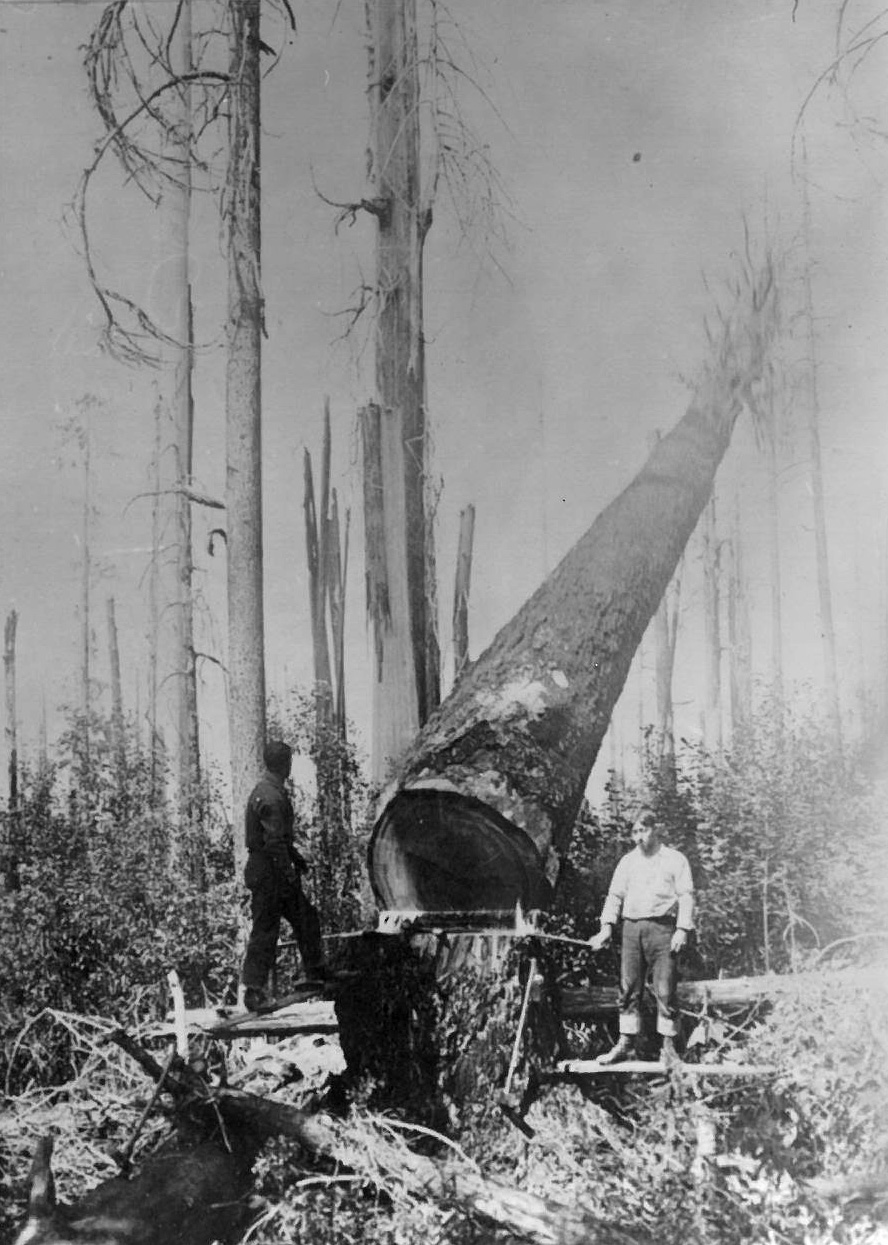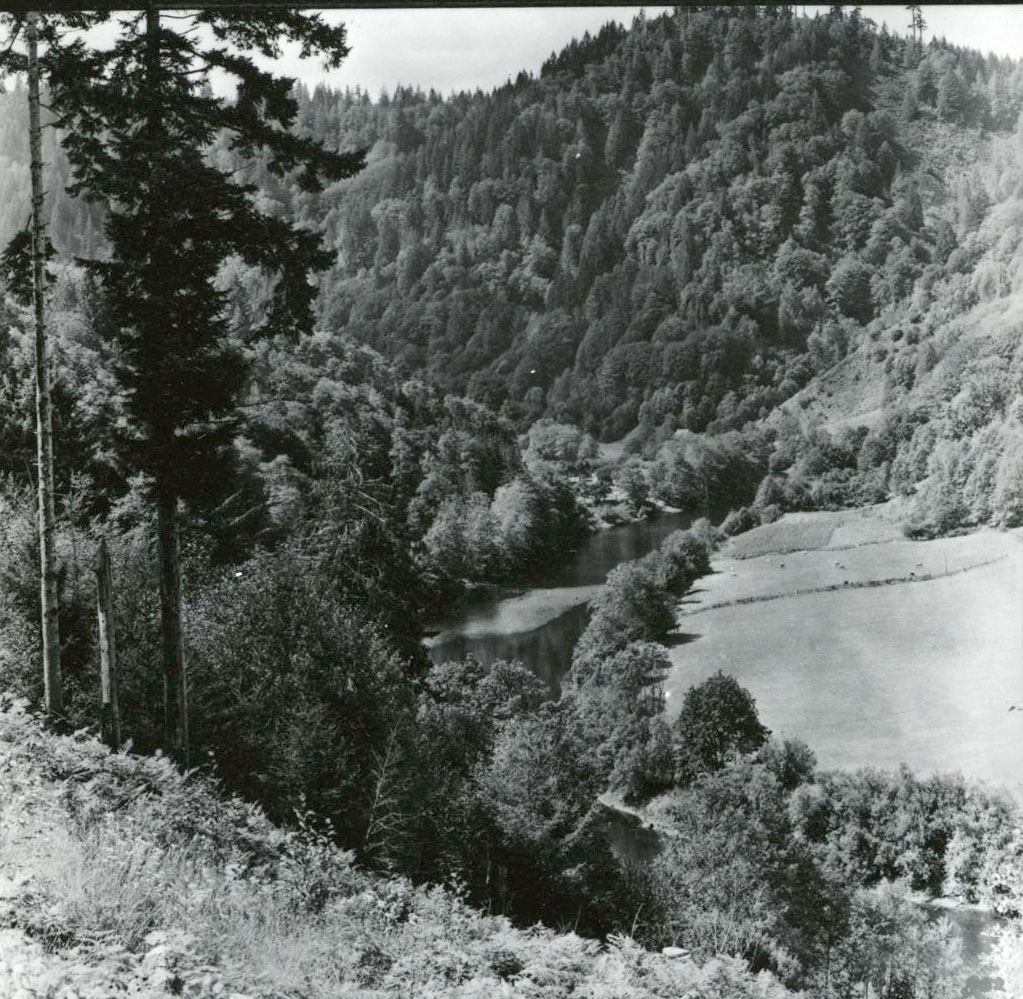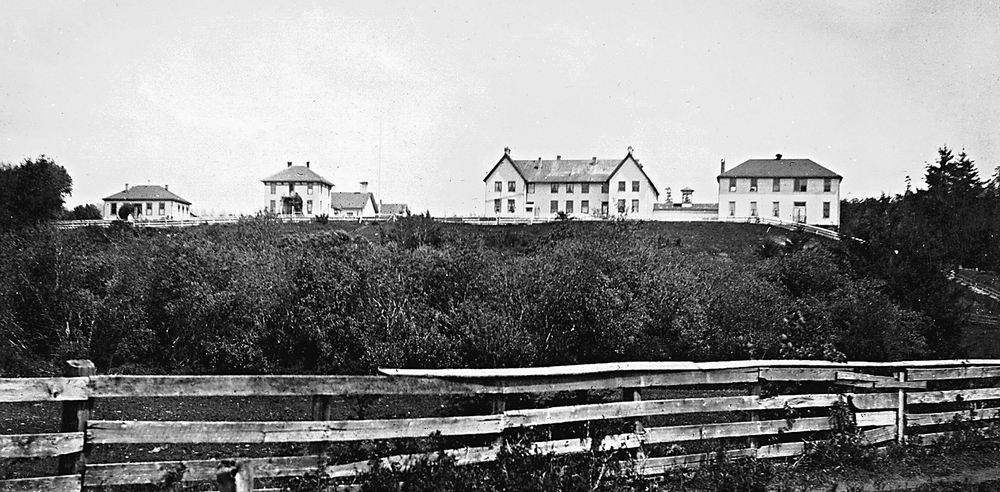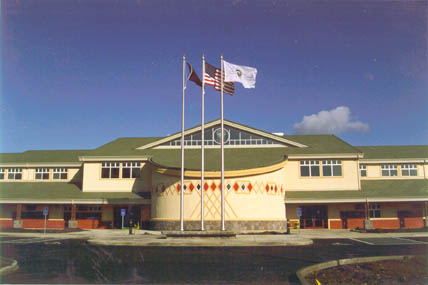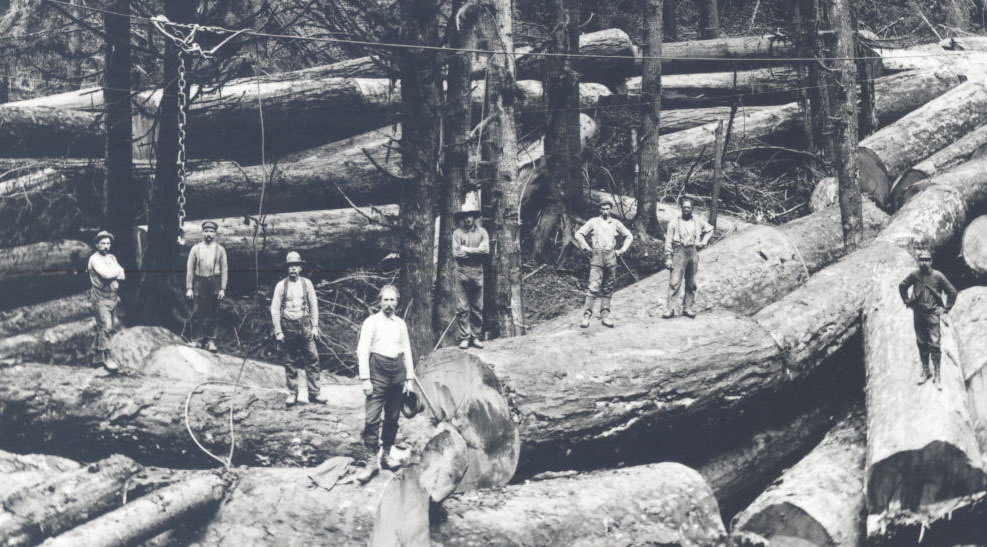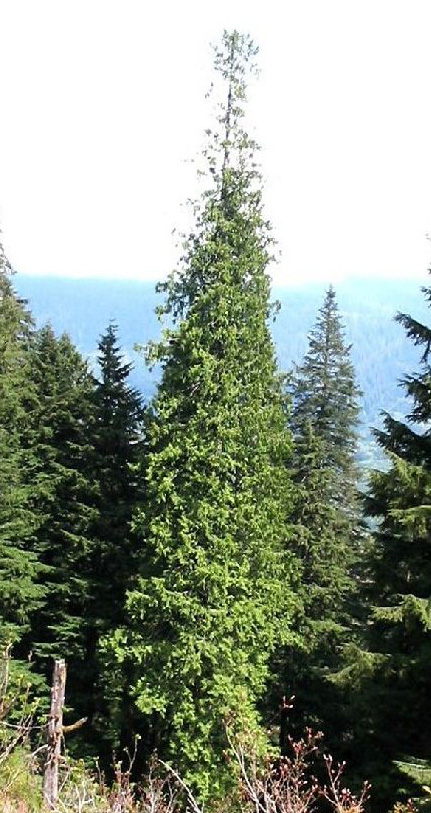In pre-settlement times, native peoples of the Pacific Northwest Coast harvested trees to build canoes, to make planks for plankhouses, or to create works of art for ceremonies. They harvested planks from live standing trees, mainly straight grain trees, such as western red cedar and redwood. The bark of cascara sagrada and many other species of trees was harvested for medicine and food or to create baskets for berry picking. To harvest the bark and plants, Indians used tools made from stone, wood, antlers, and shells.
Between 1855 and 1875, Oregon Indians were removed to reservations, and the Indian agents and reservation schools began training them in Western-style agriculture. Life on the reservations was harsh, with few jobs available, and native laborers were paid half the wage that whites received for the same jobs. To make money throughout the year, natives from the reservations at Grand Ronde, Siletz, Warm Springs, and Klamath traveled to the Willamette Valley and other Oregon agricultural districts to work the harvests. Many families worked as groups to harvest hops, berries, and beans through the summer months while living at tribal encampments.
By the late nineteenth century, native men had become principal workers in the logging industry. Many men left their reservations for months or years at a time to work in the woods. They traveled to wherever logging was paying well, from Alaska to California, and many became the lead loggers in their outfits. While their families remained on the reservation, these workers lived in logging camps and sent money home to help pay the bills.
Many native men still participate in logging, and tribes now manage huge forests for their economic and cultural resources. The Klamath, Warm Springs, Siletz, Coquille, Grand Ronde, and Umatilla maintain tribal forests for sustained long-term yields (their combined commercial timberland totaled 288,187 acres in 2007). Other Oregon tribes are working to restore their reservation timberlands: the Coos, Lower Umpqua, and Siuslaw have restored 43,000 acres, and the Klamath are working on restoring 670,000 acres. Oregon's tribes also work conjointly with state and federal parks to help manage Oregon's forests.
Tribal natural resource programs are leaders in forest management in Oregon, responsible for a combined total of 3.8 million board feet of standing timber. The tribes work to restore the diversity of forests that include timber trees, as well as berry plants, medicinal plants, and weaving materials.
-
![]()
"Falling tree," Oregon.
Oregon Historical Society Research Library, Orhi 58958, Album 505, photo file 855
-
![]()
"In the Forest--Klamath." A Klamath man leaning against a Ponderosa Pine, c. 1932.
Courtesy Library of Congress, Edward Curtis, photographer -
![]()
Felling a Washington Cedar.
Oregon Historical Society Research Library, 66626, photo file 680
-
![]()
A logging crew in Oregon.
Oregon Historical Society Research Library, 11795, photo file 680
-
![]()
Felling timber in Tillamook County, Oregon.
Oregon Historical Society Research Library, Orhi 21038, photo file 680
-
![Sign says: "1/2 mile to the log cut by the Chinook Tribe of Indians more than 100 years ago, according to word handed down by the early settlers."]()
Related Entries
-
![Alsea Subagency of Siletz Reservation]()
Alsea Subagency of Siletz Reservation
In September 1856, Joel Palmer, the Superintendent of Indian Affairs fo…
-
Coast Indian Reservation
Beginning in 1853, Superintendent of Indian Affairs Joel Palmer negotia…
-
![Confederated Tribes of Grand Ronde]()
Confederated Tribes of Grand Ronde
The Confederated Tribes of Grand Ronde Community of Oregon is a confede…
-
![Gyppo Logging in Oregon]()
Gyppo Logging in Oregon
The term “gyppo logging” refers to timber harvesting conducted by small…
-
![Timber Industry]()
Timber Industry
Since the 1880s, long before the mythical Paul Bunyan roamed the Northw…
-
![Western red cedar]()
Western red cedar
Western red cedar (Thuja plicata) is one of the grand trees that grows …
Related Historical Records
Map This on the Oregon History WayFinder
The Oregon History Wayfinder is an interactive map that identifies significant places, people, and events in Oregon history.
Further Reading
Alan S. Newell, et al. A Forest in Trust: Three-quarters of a Century of Indian Forestry, 1910-1986. Washington, D.C.: Bureau of Indian Affairs, 1986.

